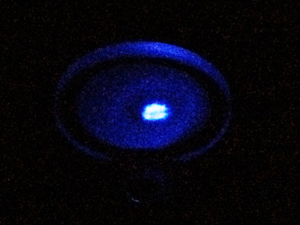Introduction to the ultra slow muon beamline equipments
[Capture MIC solenoid magnet with large solid angle]
Normal conducting magnet installed in the most upstream part of U-line, to capture slow (surface) positive muons from the muon target with a momentum of 30 MeV/c and a solid angle of 400 mSr. Since the radiation dose near the muon target is very high, mineral-insulated coils (MIC) are used.
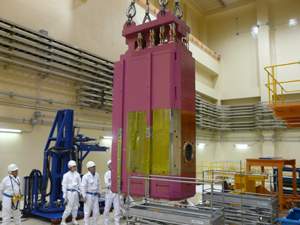
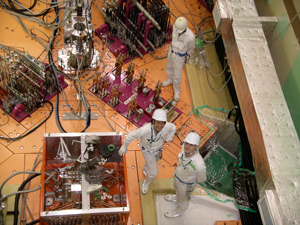
[Superconducting curved transport solenoid magnet]
Superconducting curved solenoid magnet with a total length of 7 m to efficiently transport the captured muons from the beam tunnel to the experimental hall, while shielding the extremely high radiation from the primary proton beam and the muon target. It comprises two 45-degree curved sections (entrance and exit) composed of seven thin solenoids each, and a 6-m long straight section made five segments of 1.2 m. The inner-diameter of the cold bore is 300 mm on the straight section, with a maximum rating magnetic field of 2 T. The solenoid coils are cooled down to 4K by conduction cooling with five sets of Gifford-McMahon (GM) refrigerator located on a cooling chimney.
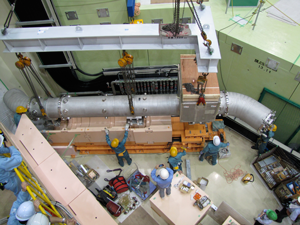
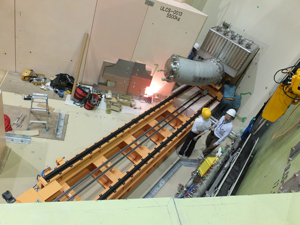
[Superconducting axial focusing solenoid magnet]
An axial focusing solenoid made of six superconducting magnets with a diameter of 70 mm is used to converge and efficiently transport the muon beam to the muonium chamber in the experimental area U1. The trajectory of the muon beam in the axial focusing solenoid goes through successive focusing and defocusing. In the space between the magnets, functionalities are installed, namely a beam blocker, a positron separator to eliminate contamination in the beam and a beam slit.

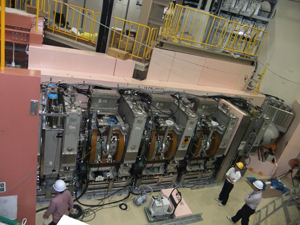
[Muonium chamber]
The thermal muonium production chamber contains a hot tungsten target (W target, 50 μm thick, 99.9999% purity) that is used to produce muonium atoms in ultra-high vacuum. The W target is heated up to 2000° C by a pulsed interrupt heater power supply (DC current of up to 1000 A) synchronized with the muon beam. It is turned off for 1 ms around the muon pulse arrival time to eliminate induced magnetic field from the target, and is also electrically insulated to apply 30 kV to the target for beam extraction.
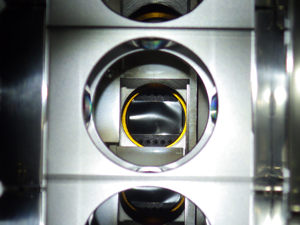
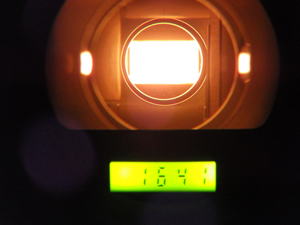
[Lyman-α laser system]
As a joint development with RIKEN, the world's highest intensity pulsed Lyman-α laser (VUV laser: 122 nm) of about 100 μJ/pulse was developed and confirmed by the occurrence of Lyman-α light. Adjustment of the laser beam transport and intensity is now in progress.
.png)
